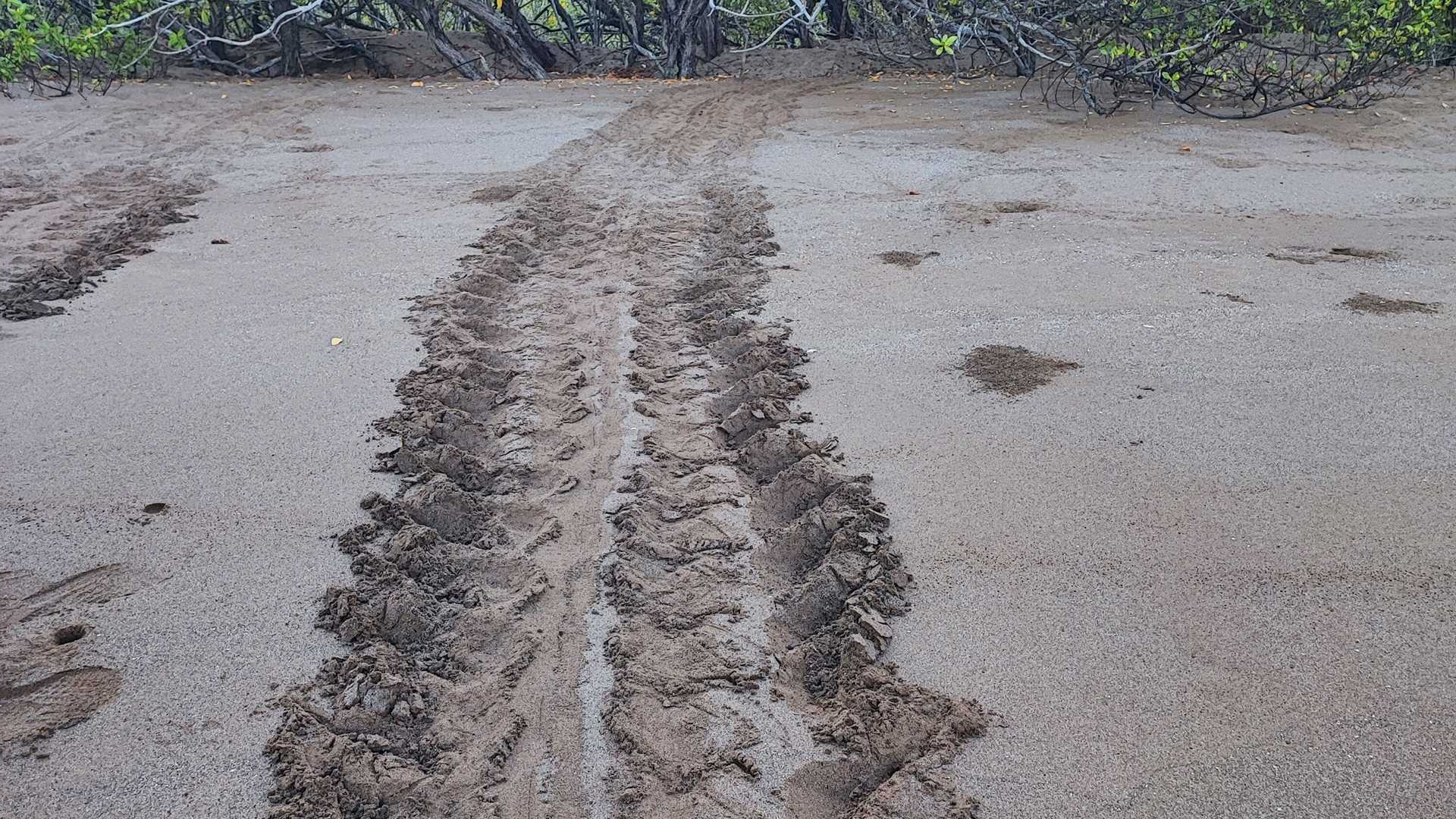As we returned to the central islands of the archipelago, we visited Santiago (or James) Island. This is one of the largest islands in the Galapagos, and it is inhabited by a number of species, including sea turtles, land tortoises, land and marine iguanas, sea lions, fur seals, waders, seabirds, and land birds.
We started our day with a prebreakfast outing. We landed on beautiful Espumilla Beach, named for the foam produced when the surf hits the shore. As the sun rose, the early morning light lit up the water, the plants, and the beach with beautiful colors. This beach is a favorite nesting site for sea turtles, and we encountered many tracks from turtles looking for a place to lay their eggs. Along with turtle tracks, we found the tracks of the ghost crabs that clean up the beach by filtering the plankton and other goodies left behind by the ocean. We spotted the small tracks of hermit crabs close to the turtle tracks, revealing the presence of the small predators in search of turtle eggs.
Mangroves are the primary vegetation on Espumilla Beach. Mockingbirds, finches, and flycatchers hopped around on branches and welcomed us with their songs and melodies. The Galapagos flycatcher is an amazing land bird. There is no other bird as curious as this endemic species. You do not need to be a photographer to enjoy the way the Galapagos flycatcher poses. It is simply amazing!
A number of introduced species such as wild pigs and feral goats once inhabited James Island. The National Park Service has worked nonstop on different conservation programs to save endemic species, eradicate introduced species, and restore the island’s original ecosystem. Lindblad Expeditions adopted James Island, and we support the National Park’s efforts. We are proud that James Island is recovering the flora and fauna once abundant on the island. One of the incredible projects is aimed at helping the giant tortoise population in the highlands and to save the endemic plant life on which these reptiles depend. A few years back, the National Park reintroduced a large number of land iguanas. This species once lived on James Island but went extinct due to the introduced species. Today, we were so lucky to encounter the beautiful reptiles during our hikes in the early morning and in the afternoon.
Just before lunch, we all participated in water activities. We enjoyed kayaking, tours in the glass-bottom boat, and, of course, snorkeling off the Zodiacs. Conditions were fantastic!







